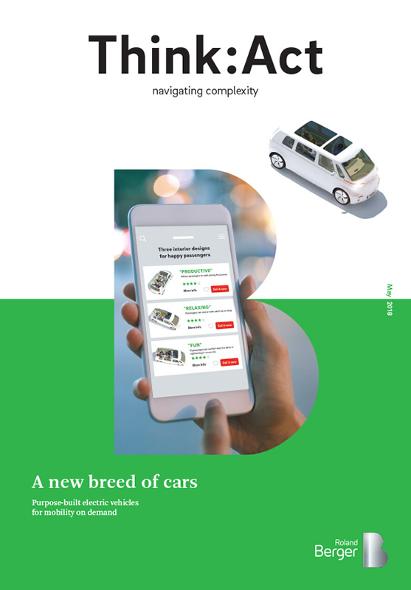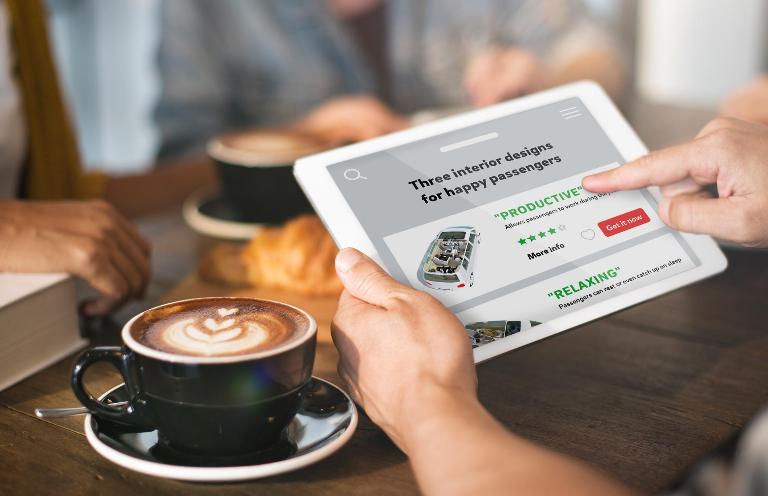Purpose-built vehicles for mobility services
![{[downloads[language].preview]}](https://www.rolandberger.com/publications/publication_image/Roland_Berger_PUB_397_Purpose_Built_Vehicles_Cover_download_preview.jpg)
Mobility services require a new type of car. Purpose-built vehicles provide unique passenger ride experiences.


The car industry is about to create a new market segment: Purpose-built vehicles for mobility services. With their flexible design, they provide a unique travelling experience for passengers. The market for this new mode of transportation is expected to increase to as many as 5 million units until the year 2030.
"New players will need to develop entirely new vehicles."
The automotive market is gradually adopting the trend of autonomous driving, which is estimated to reach mass production within the next five to ten years. But the market requirements are already changing significantly. Companies offering mobility services like Uber in the United States or Didi Chuxing in China require a fleet that enhances the passenger ride. The major features include specific passenger experiences, flexibility of use and low prices. The new purpose-built vehicles are designed to meet the requirements for mobility on demand. The first offers are available from companies such as the German start-ups StreetScooter, e.Go and MOIA.
Flexible interior design ensures unique passenger experiences
Looking at mobility services companies, the car industry must shift its focus from drivers to passengers, as they are the paying customers. Cars will not only serve as a mode of transportation, but must also provide a special experience. Currently, even most taxis – with the exception of those in London and Tokyo – look like common cars and cannot be regarded as relevant models. Most likely the private sector can learn from the commercial sector, where specification – for example for buses – is already a common practice. Passengers of purpose-built vehicles will enjoy benefits such as swiveling seats, adjustable lighting, foldable tables, pivoting screens and accessible temperature control. In this way, they could alternatively work, relax, chat with other passengers or go on a sight-seeing tour.
Updated car concepts diminish costs to market and of ownership
The vehicle-to-market expenditures for purpose-built mobility vehicles are expected to be comparatively low. Yet the amount of the savings depends on the overall design concept. Specifically, savings increase the further conventional car designs challenge and rethink form and function. Ideally, purpose-built vehicles consist of fewer components than traditional cars and are mass-produced with efficient technologies like 3D printing in low-cost countries such as China. Accordingly, the total cost of ownership appears comparatively attractive due to several factors – like fewer mechanical parts, no liquids to replace and lower insurance fees.
Maximum growth in the 2020s particularly in China
According to the Roland Berger study "A new breed of cars", the demand for purpose-built vehicles will grow decisively. Until 2020 the amount could go up to about 1 million units, then raise 21% until 2025 and 14% until 2030. China is expected to be by far the largest market for the new vehicle class, with a market share of 60%, followed by North Amerca (22%), Europe (13%) and MENA (5%).

![{[downloads[language].preview]}](https://www.rolandberger.com/publications/publication_image/Roland_Berger_PUB_397_Purpose_Built_Vehicles_Cover_download_preview.jpg)
Mobility services require a new type of car. Purpose-built vehicles provide unique passenger ride experiences.
